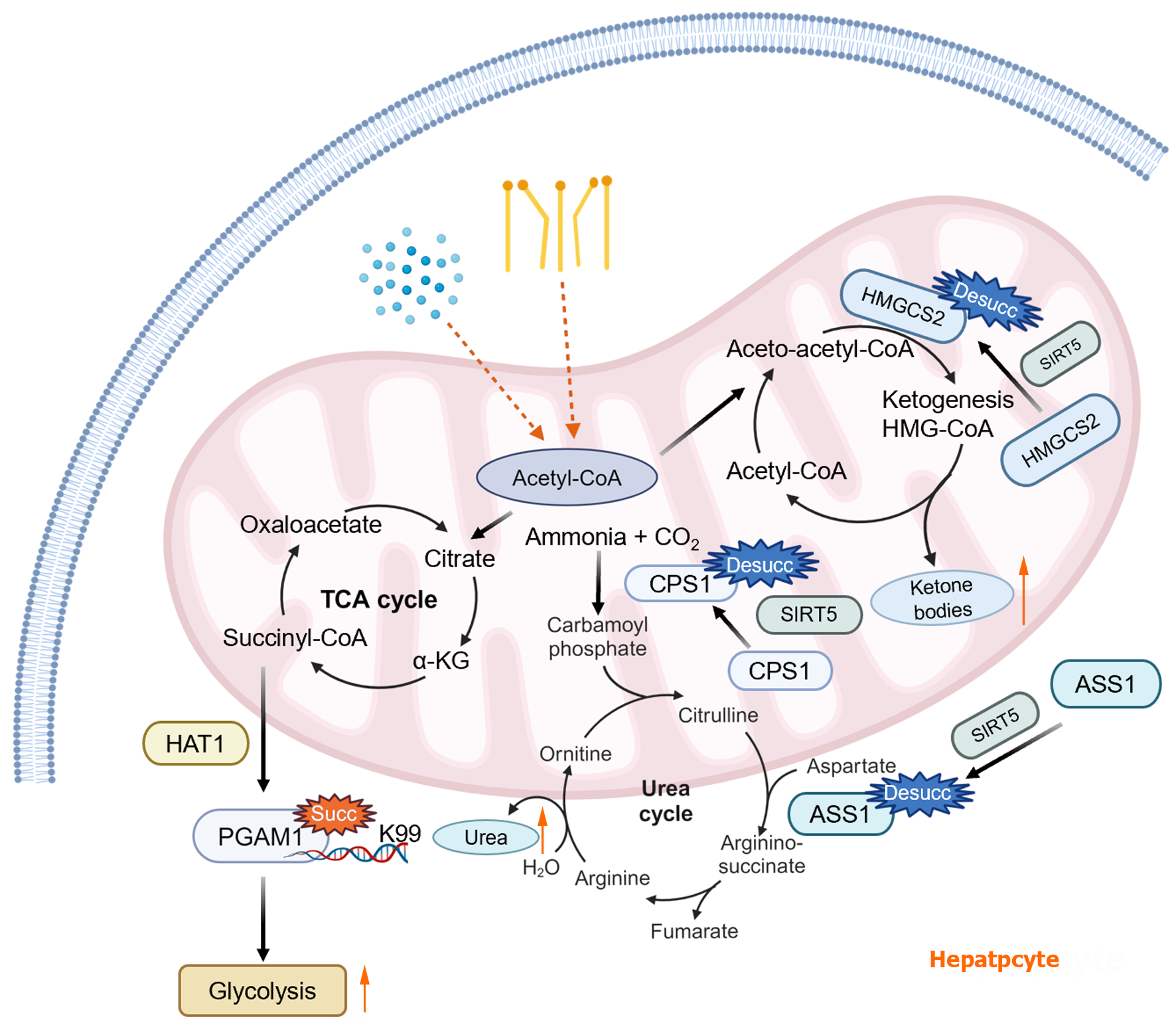Copyright
©The Author(s) 2024.
World J Hepatol. Mar 27, 2024; 16(3): 344-352
Published online Mar 27, 2024. doi: 10.4254/wjh.v16.i3.344
Published online Mar 27, 2024. doi: 10.4254/wjh.v16.i3.344
Figure 2 Effect of succinylation on hepatic metabolic pathways.
The influence of succinylation on hepatic glucose metabolism occurs in the following ways: (1) Under the stimulation of succinyl-CoA. Histone acetyltransferase 1 causes the K99 site of phosphoglycerate mutase 1 to be succinylated and promotes its enzyme activity, thus promoting glycolysis; (2) the influence of succinylation on hepatic amino acid metabolism. Sirtuin 5 promotes urea production by regulating the desuccinylation of arginine succinate synthetase 1 and carbamoyl phosphate synthase 1; and (3) the influence of succinylation on hepatic lipid metabolism. Sirtuin 5 induces desuccinylation of mitochondrial 3-hydroxy-3-methylglutaryl-CoA synthetase 2 and promotes ketone body formation. HAT1: Histone acetyltransferase 1; SIRT5: Sirtuin 5; TCA: Tricarboxylic acid; HMGCS2: 3-hydroxy-3-methylglutaryl-CoA synthetase 2; PGAM1: Phosphoglycerate mutase 1; ASS1: Arginine succinate synthetase 1.
- Citation: Liu S, Li R, Sun YW, Lin H, Li HF. Protein succinylation, hepatic metabolism, and liver diseases. World J Hepatol 2024; 16(3): 344-352
- URL: https://www.wjgnet.com/1948-5182/full/v16/i3/344.htm
- DOI: https://dx.doi.org/10.4254/wjh.v16.i3.344









